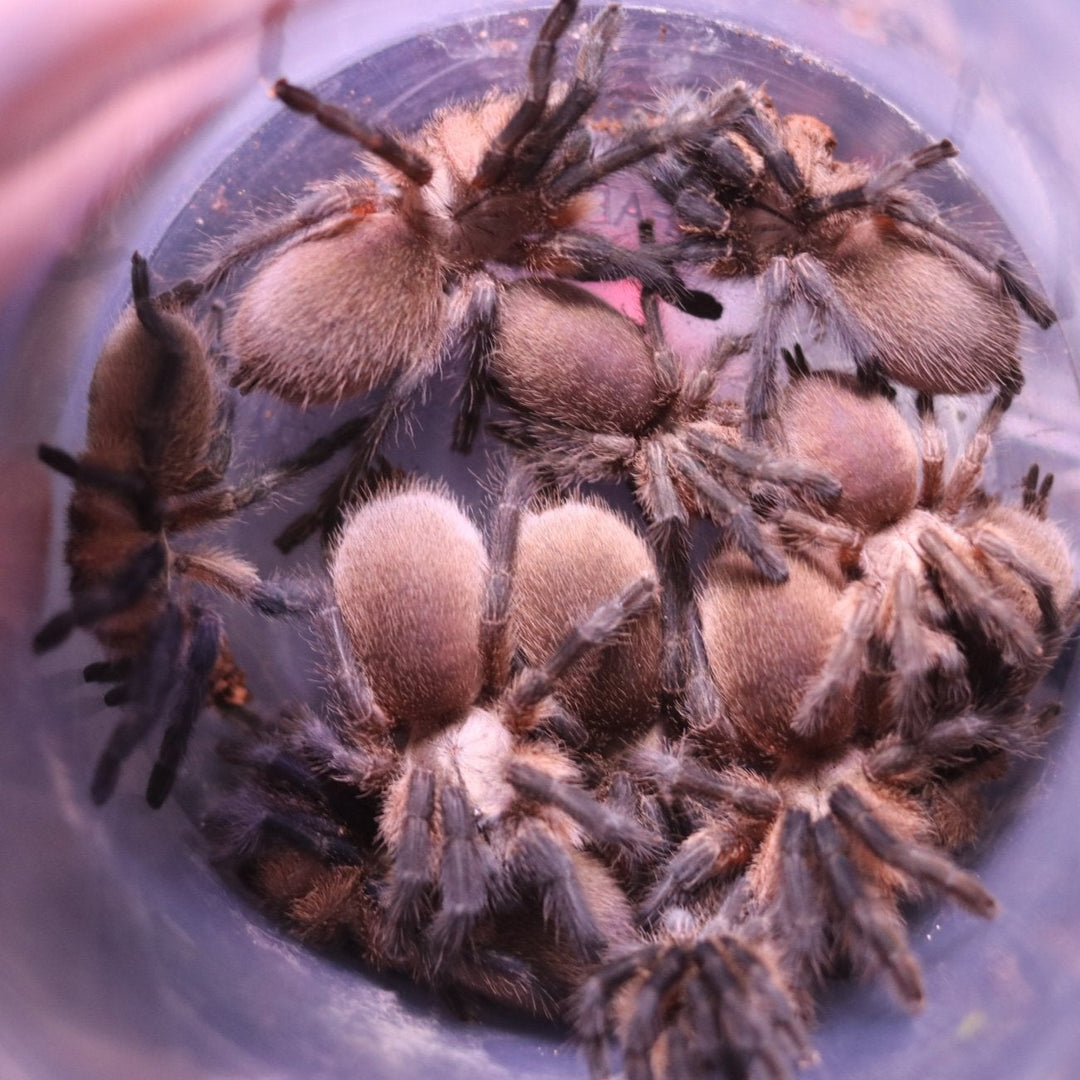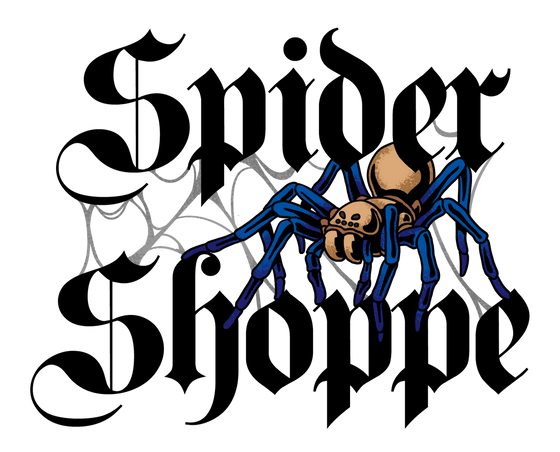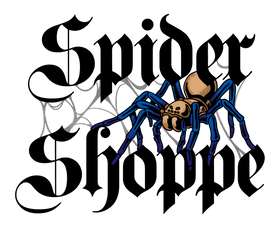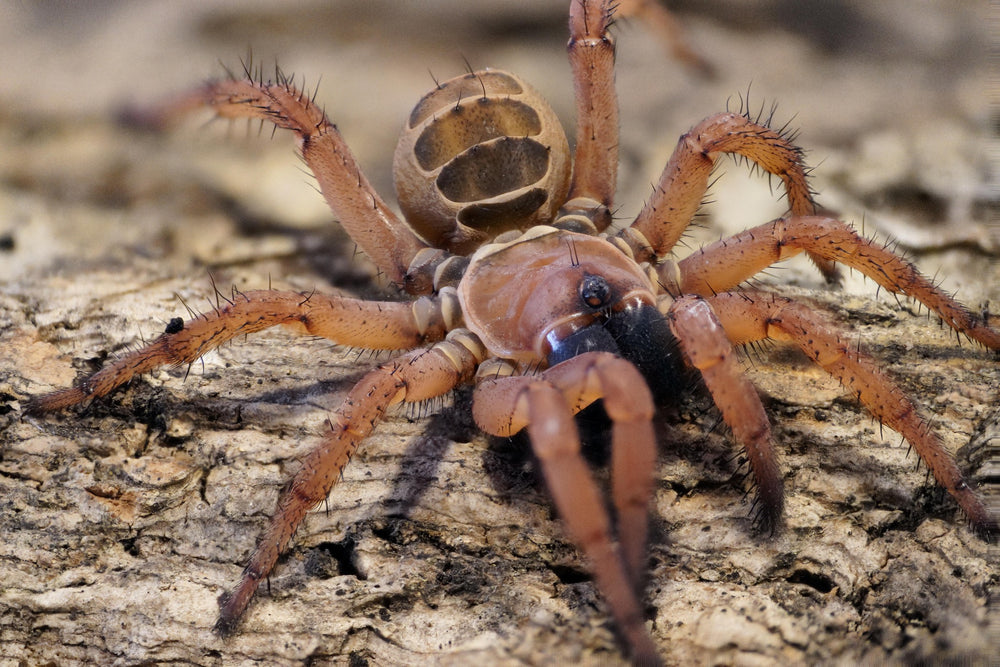
Monocentropus balfouri (Socotra Island Blue Baboon) 0.75-1" | 1-1.5" | 2.5-3.5" FEMALES | 2.5-3.5" MALES
- Live Arrival Guarantee
- Live Animals Ship FedEx Priority Overnight (Mon-Weds)
- Low stock - 9 items left
- Inventory on the way
The Socotra Island Blue Baboon, Monocentropus balfouri Pocock is a truly unique gem of the tarantula world. These are one of the few lineages of tarantulas that can be raised communally and have an otherworldly color palette. Despite its common name, M. balfouri is actually not a true baboon spider (not a member of Harpactirinae), instead this species belongs to the earliest-diverging tarantula subfamily, Eumenophorinae. This lineage split off from all other tarantulas even before the “New World” and the rest of the “Old World” tarantula lineages had diverged from each other.
These theraphosids have some curious similarities to members of another related genus in their subfamily- Hysterocrates, which also tolerate communal rearing and share the micro-velvet covering of the carapace. Although M. balfouri has been found in close proximity in nature, they have not been observed to be communal in habitat, suggesting these tarantulas are not obligately social and will eventually disperse if left to their own devices.
M. balfouri naturally occurs along dry, rocky, sun blasted slopes of tropical Socotra Island, off the coast of Yemen and the Horn of Africa. Throughout the dry thorn and succulent scrub ecosystem of these spiders is the island’s iconic dragon’s blood tree, Dracaeana draco- a magnificent member of the asparagus plant order that grows over centuries into monolithic trees with an umbrella- or flying saucer-shaped canopy. So this weird, somewhat primeval tarantula comes from a land of martian flying saucer-like trees- it’s almost something out of a Sir Arthur Conan Doyle novel.
M. balfouri is an incredibly beautiful species, beginning life as a dark gray spiderling that grows at a medium pace into a sculpted physique with 5-6” diagonal leg span. After several years, they develop a metallic fawn color abdomen studded with short porcupine spine-like setae. The carapace is mesmerizing and totally unique among tarantulas- taking on stormy metallic brushed steel to silver blue with turquoise tones, somewhat like the cyanobacterial colors of a geothermal hot spring. The bright tan femur of each leg looks electrified with dense, long, nearly white setae, and the rest of the leg and chelicerae contrast wildly through sporting deep indigo coloration. There is no other tarantula with this dashing color combination, leaving small wonder why this is called the “blue baboon.”
M. balfouri are opportunistic burrowers and semi-arboreal, excavating under objects through substrate and extending their web tunnels through overlying brush. As such, a terrestrial enclosure with cross ventilation and several inches of airy, dry substrate works with periodic misting in a portion of the cage to maintain regionalized slight moisture for larger instars to maturity. Adding cork slab, sticks and dry leaves also will make these spiders feel at home. They are copious webbers and will promptly form elaborate tunnel systems and fill their enclosure with silk. They can go into seasonal dormancy if temperatures remain in the low 70s F and below for an extended period, so seem to be in their metabolic sweet spot when days are in the low 80s and nights in the 70s F.
In captivity, M. balfouri can be reared communally or individually. Not all specimens of M. balfouri are as socially inclined as others, so the vibe depends upon the personalities within a communal group. Since they are not obligately communal, they can be reared individually as well. A drawback to this species is that they are quite skittish and can be somewhat timid feeders. It is recommended to feed these spiders smaller prey than other tarantulas their size would typically accept. Although M. balfouri has a calmer, less defensive disposition than most Old World tarantulas, they are very shy speed demons, and often stay hidden in their burrows. To see these spiders more often during the day, it is best to place the enclosure in a dark and quiet location. If you are looking for a unique and beautiful tarantula species, M. balfouri is hard to beat!
References
Pocock, R.I., 1897, October. On the Spiders of the Suborder Mygalomorphse from the Ethiopian Region contained in the Collection of the British Museum. In Proceedings of the zoological Society of London (Vol. 65, No. 3, pp. 724-774). Oxford, UK: Blackwell Publishing Ltd.
https://arachnoboards.com/threads/m-balfouri-single-vs-communal.321291/

Info on our shipping policy can be found on our T&C page.



